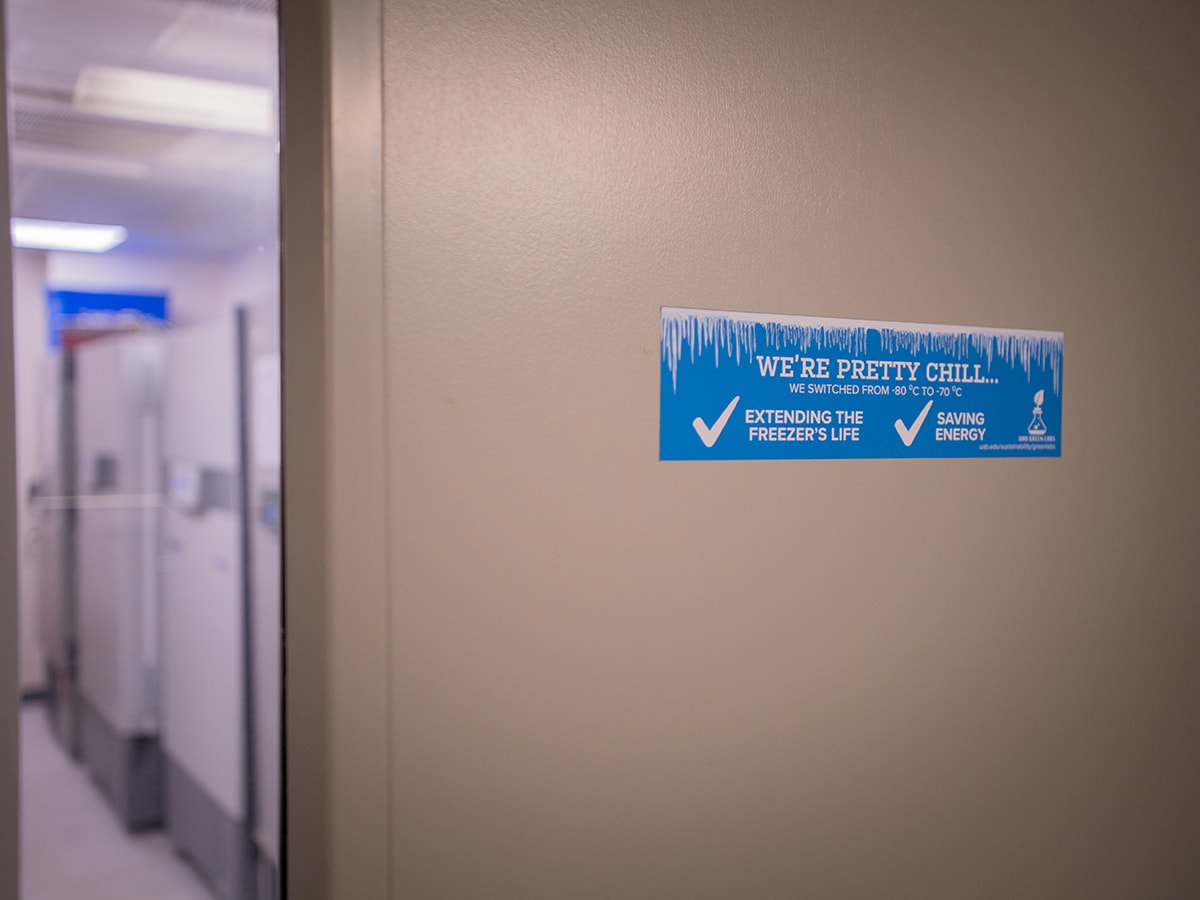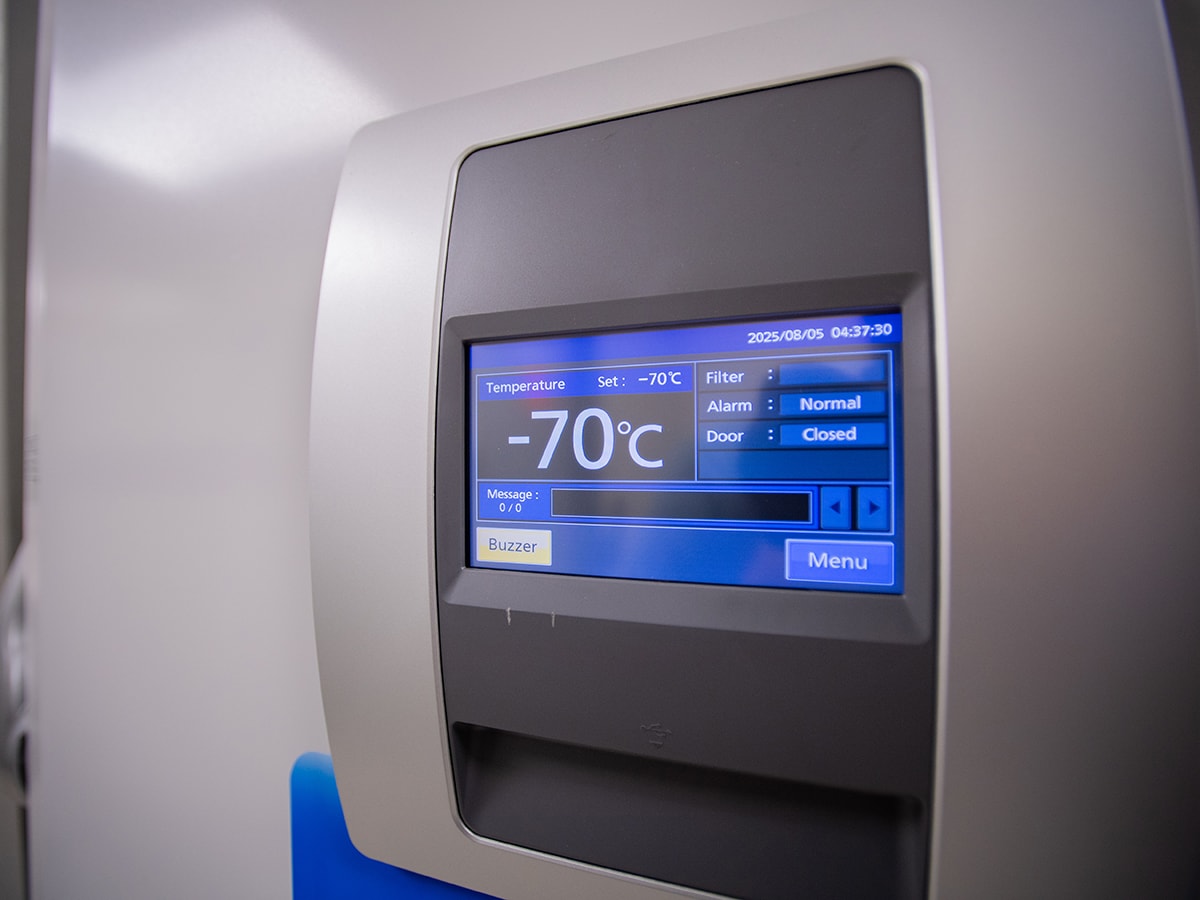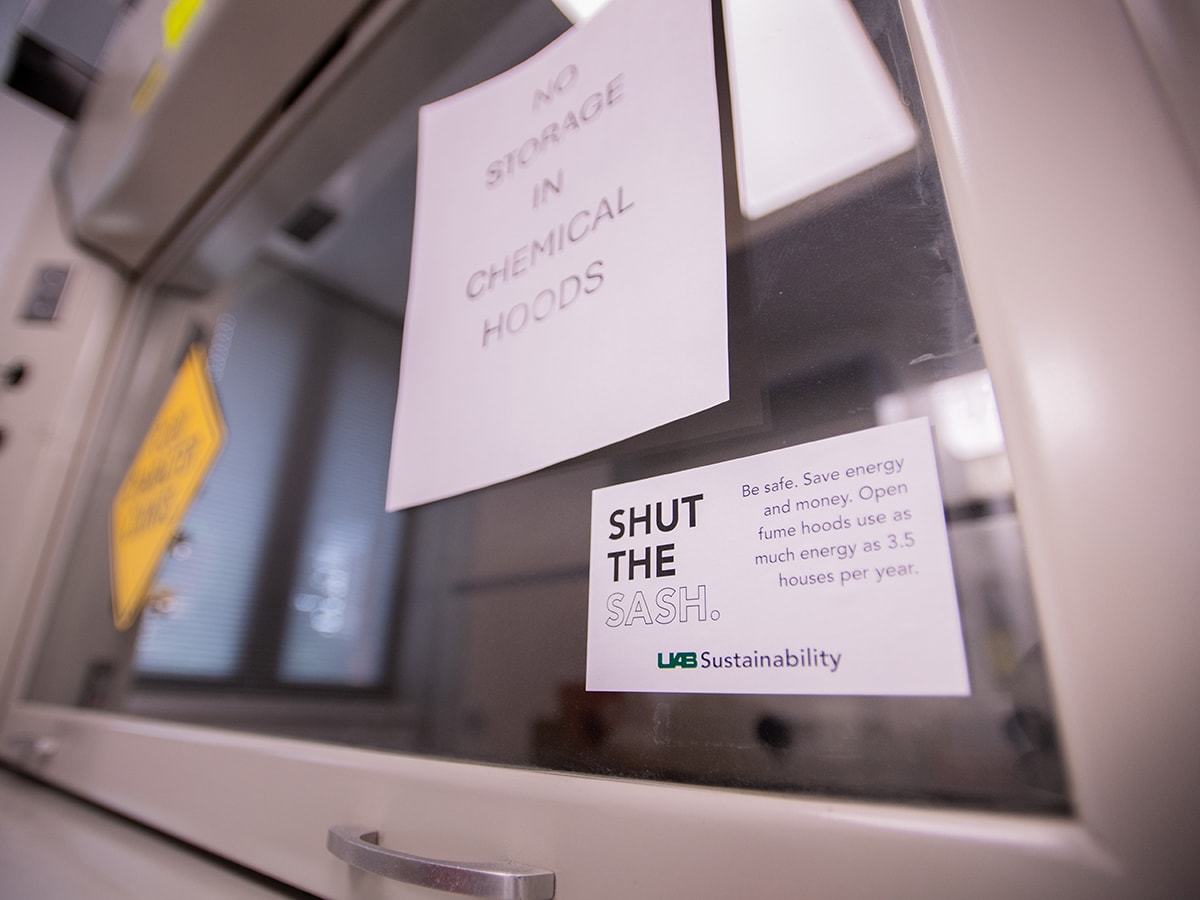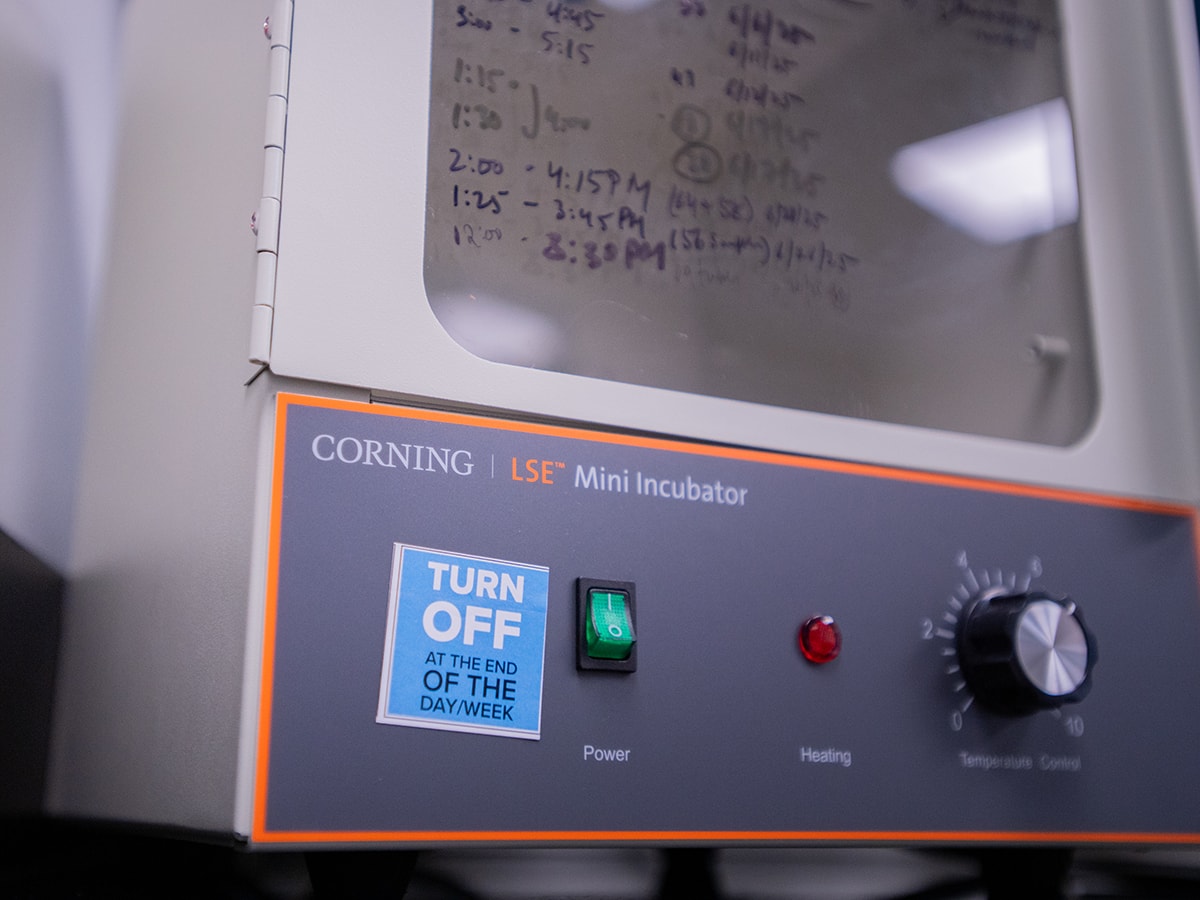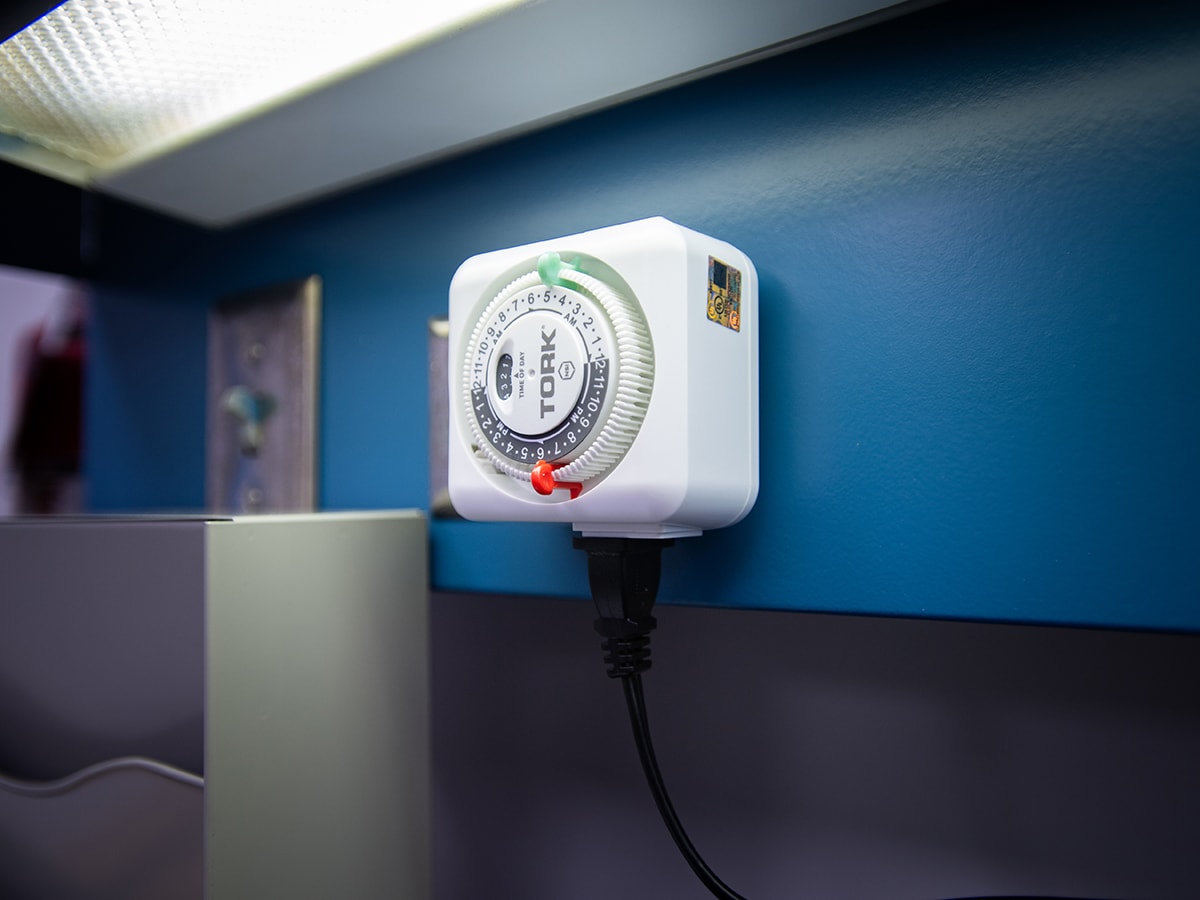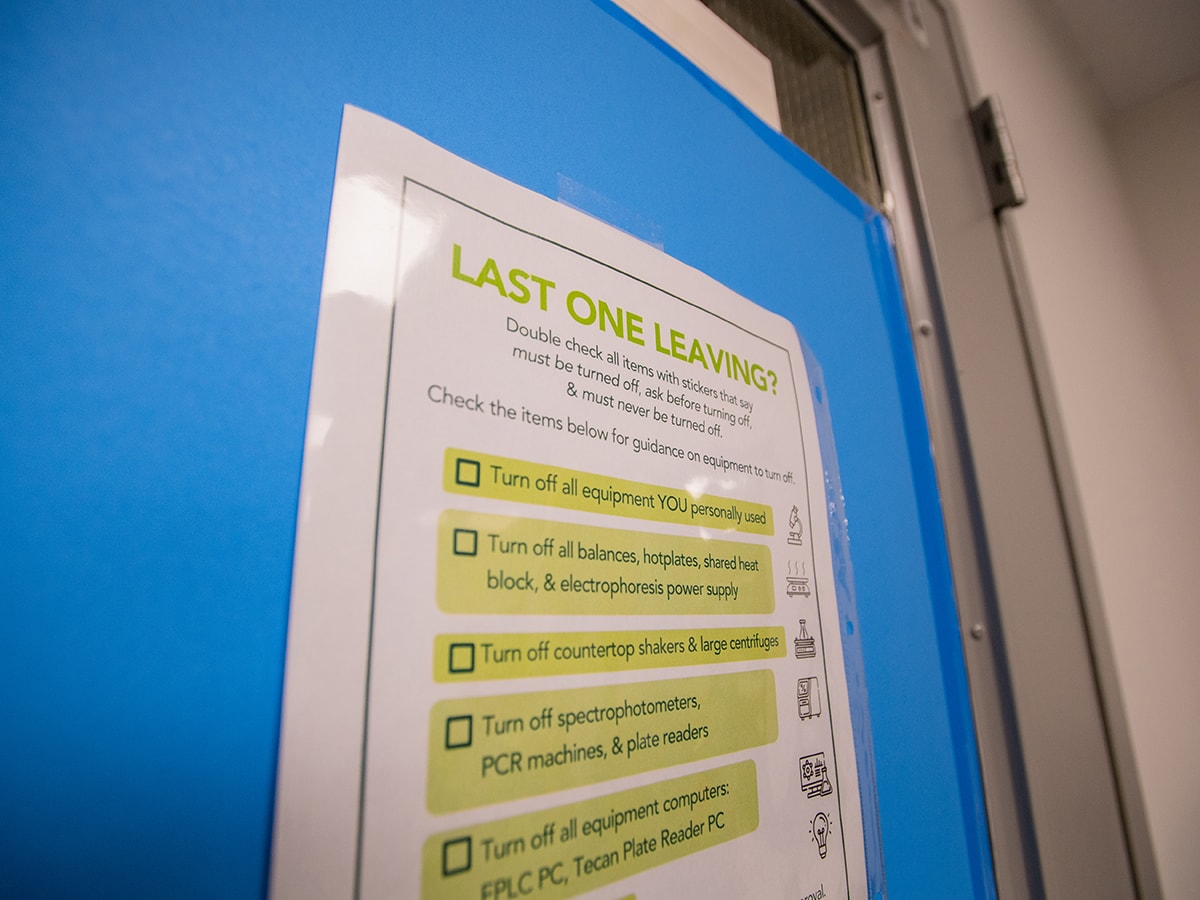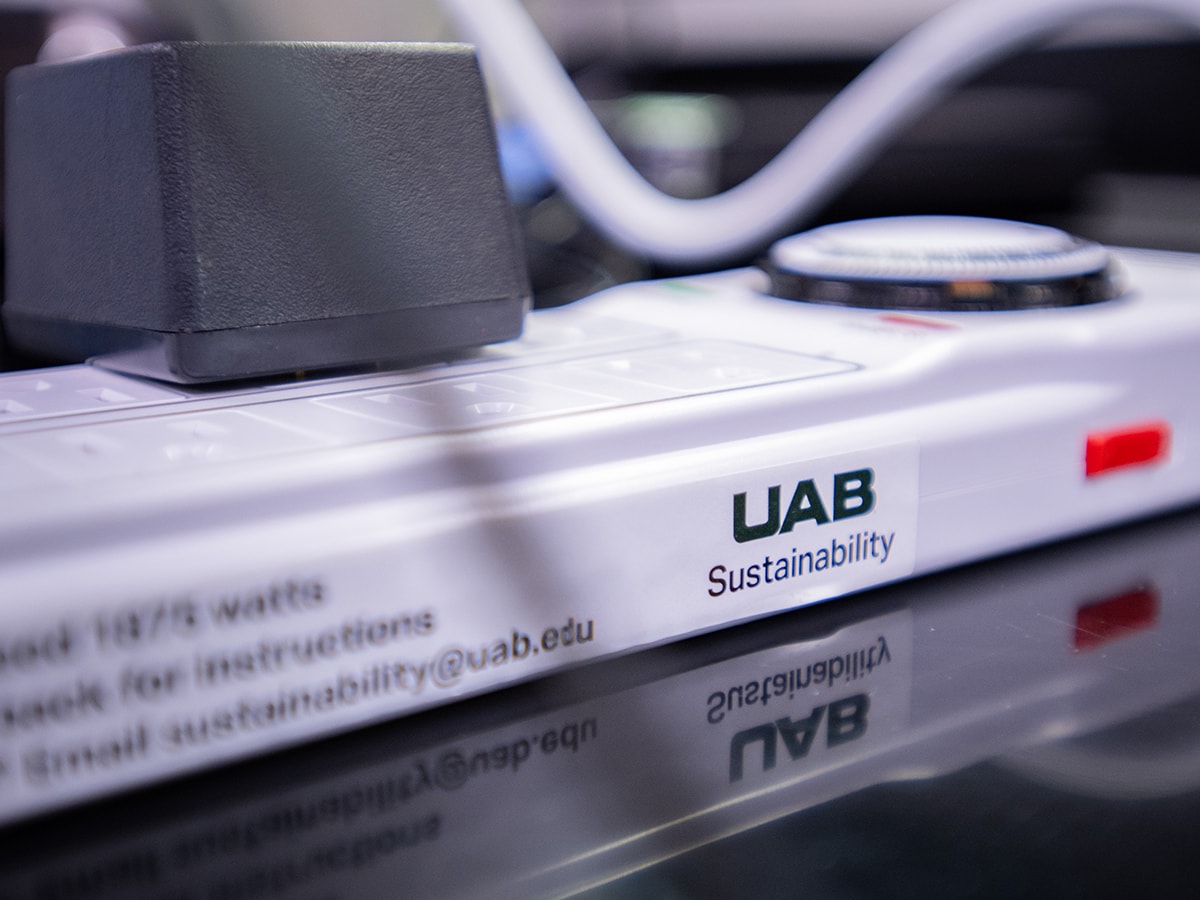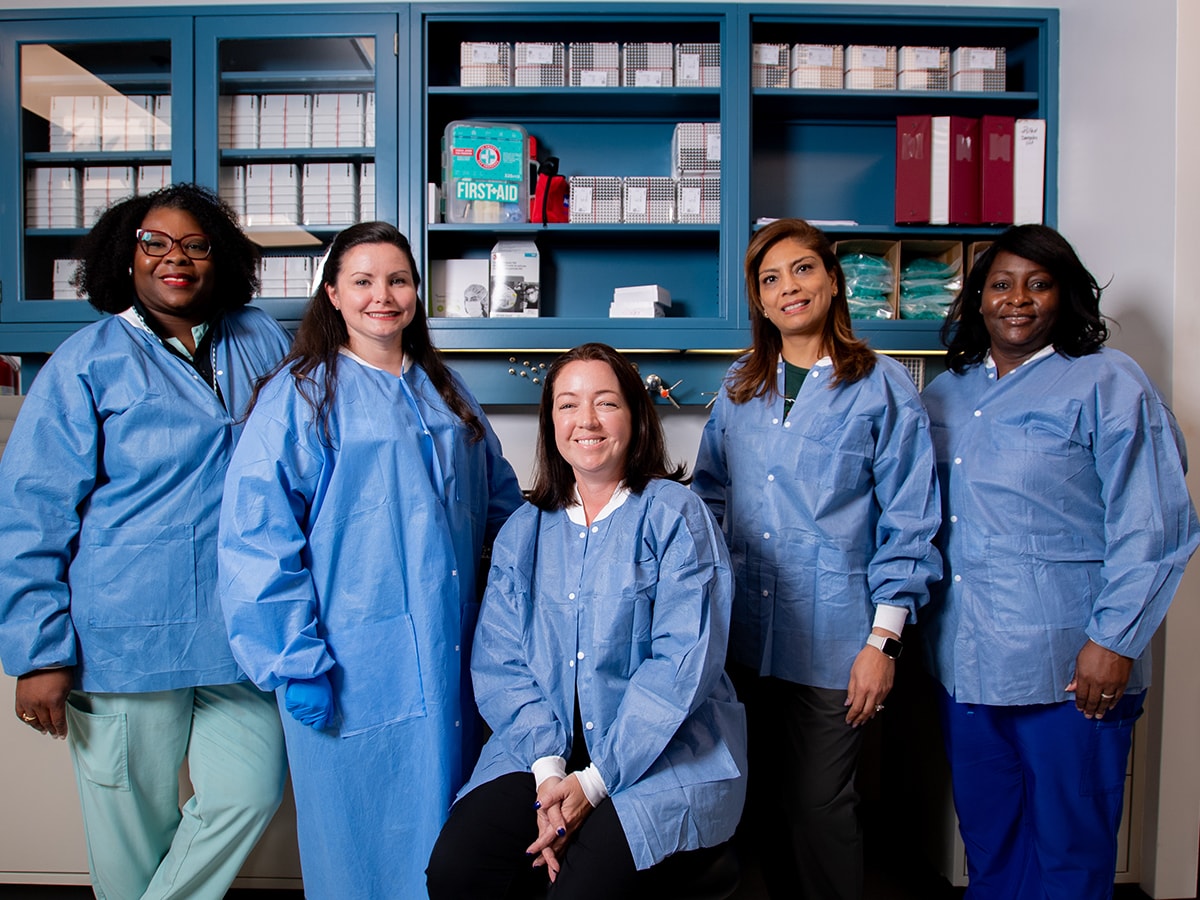 The OB/GYN Research and Diagnostic Laboratory has saved more than 61,000 kilowatt-hours per year through the UAB Green Labs program — the equivalent of 5.5 American homes' worth of electricity. Left to right: Lab members Zenetta Moultrie, Carly Sorrelle, Sarah Patterson, Noureen Ali and Whitney Eaton.UAB research labs participating in the university’s Green Labs Program have saved more than $1.4 million in energy reductions and resource savings since the program began in 2017, according to a new analysis by UAB Sustainability. Nearly $500,000 was saved in 2024 alone.
The OB/GYN Research and Diagnostic Laboratory has saved more than 61,000 kilowatt-hours per year through the UAB Green Labs program — the equivalent of 5.5 American homes' worth of electricity. Left to right: Lab members Zenetta Moultrie, Carly Sorrelle, Sarah Patterson, Noureen Ali and Whitney Eaton.UAB research labs participating in the university’s Green Labs Program have saved more than $1.4 million in energy reductions and resource savings since the program began in 2017, according to a new analysis by UAB Sustainability. Nearly $500,000 was saved in 2024 alone.
“This is a great illustration of the combined benefits to the entire UAB research enterprise as well as our individual participating labs,” said Emily Colpack, who leads UAB’s Green Labs program.
Major energy reductions
Currently, more than 200 UAB labs participate in the voluntary Green Labs Program, which is a partnership between UAB Sustainability and UAB Environmental Health and Safety (learn more about how to join below). In 2024, these labs recorded $386,150 in energy reductions, according to the new audits. They also saved $110,000 by redistributing equipment between labs instead of purchasing new equipment during a pilot project testing a campus resource-sharing platform.
All UAB labs taking part in the UAB Green Labs Program are certified by the national nonprofit My Green Lab. The average lab earning My Green Lab certification saves about 29,000 kilowatt-hours per year in reduced energy usage, according to the organization. But many UAB labs save far more, Colpack says.
For example, take the UAB OB/GYN Research and Diagnostic Laboratory, a clinical lab led by Associate Professor Akila Subramaniam, M.D., MPH, that performs some 70,000 patient tests a year. According to the new audit conducted by Colpack, the lab is saving more than 61,000 kilowatt-hours per year, or the equivalent of 5.5 American homes’ worth of electricity. Although the lab has undertaken a range of energy-saving efforts, the most significant was setting all 10 of its ultralow temperature (ULT) freezers to minus 70 degrees Celsius instead of the standard minus 80 degrees. UAB has received two program awards, in 2022 and 2025, from the International Institute for Sustainable Laboratories for its energy-saving efforts.
SLIDESHOW: Simple changes, big results: Changing default freezer settings from minus-80-degrees Celsius to minus-70-degrees Celsius and keeping fume hoods closed can quickly add up to major savings. Outlet timers and surge protectors, as well as stickers, checklists and signs to help remind lab staff of energy-efficient behaviors, can be supplied by UAB Green Labs.
Resource sharing brings more gains
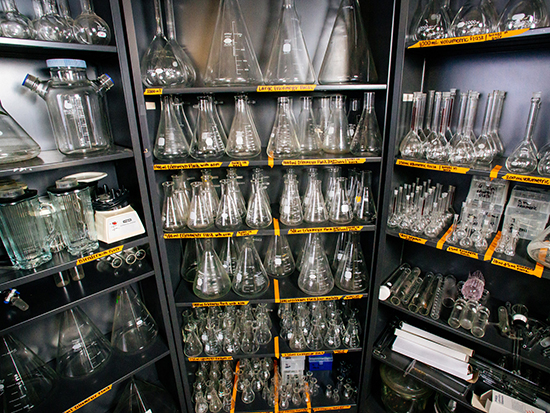 After a successful pilot, a permanent resource-sharing tool, UAB Green Marketplace, will be launched. In the meantime, labs can take advantage of the Free Lab Glass/Supplies Program from UAB Green Labs.During the campus resource-sharing pilot, a new teaching lab was able to acquire 60 microscopes from a lab that was being closed down, Colpack says. “They were just going to get sent to surplus otherwise,” she said. “The receiving lab was very happy to get the microscopes” and saved nearly $50,000.
After a successful pilot, a permanent resource-sharing tool, UAB Green Marketplace, will be launched. In the meantime, labs can take advantage of the Free Lab Glass/Supplies Program from UAB Green Labs.During the campus resource-sharing pilot, a new teaching lab was able to acquire 60 microscopes from a lab that was being closed down, Colpack says. “They were just going to get sent to surplus otherwise,” she said. “The receiving lab was very happy to get the microscopes” and saved nearly $50,000.
User comments submitted during the pilot echo those benefits. “We were able to get a fraction collector for our lab that was crucial to some of our experiments,” one researcher wrote. “This saved us over a thousand dollars and the time it would have taken to order and receive a new fraction collector.”
“I love the program,” another researcher wrote. “It was great to see what was available, and it saved us over $1,500 in glassware.”
“As a startup lab, I have saved significant funds by finding used glassware and equipment that suits my needs, and I did not have to purchase new,” said a third researcher. “I also appreciate being able to reduce costs and waste from equipment or supplies being discarded if they were still good for use.”
The success of the resource-sharing pilot means that UAB Sustainability is investing in a permanent tool, to be called UAB Green Marketplace. The implementation process is going on now, Colpack says, and the UAB Green Marketplace could roll out as soon as the fall.
Join Green Labs today
To take part in Green Labs, a lab begins by completing a survey of their current energy-efficiency efforts. Then they schedule a presentation with a Green Labs representative from UAB, who explains ways that labs can reduce their energy consumption, including shutting off equipment between uses and adding outlet timers to power down equipment outside operating hours.
Colpack encourages any research labs who have not already joined the program to send an email to
Encouraging a Green Labs culture at UAB through partnerships with UAB Environmental Health and Safety and individual departments is part of the Environmental Stewardship Foundation of Forging Ahead, UAB’s strategic plan.
